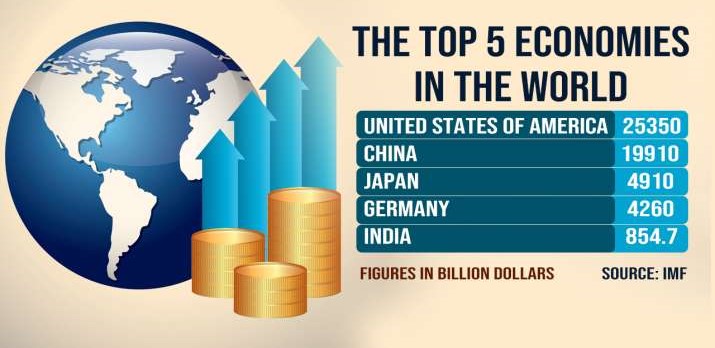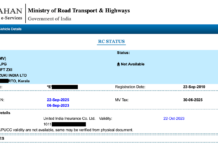NEW DELHI: Member Economic Advisory Council to the Prime Minister, Sanjeev Sanyal listed the reasons and driving forces which pushed India into the fifth largest economy, surpassing the United Kingdom.
Sanyal highlighted that ‘cumulative effort over several years is now paying dividends.’
“Structural supply-side reforms over several years, going back to the imposition of macroeconomic stability with the inflation targeting framework, then the GST reform creating a carbon market, the Insolvency and Bankruptcy Code served as the driving force for India,” Sanjeev Sanyal told ANI.
He stressed that many of these reforms happened before the COVID crisis and then through the pandemic despite all the disruptions, continuing with supply-side measures, opening up new sectors, privatization and of course, building infrastructure pushed India into the world’s top five largest economies.
“An important part of this is maintaining macroeconomic discipline through it all, despite the obvious stresses of the COVID crisis. So I think these are the whole gamut of reasons I would say this is the main driving force that has allowed India to emerge as the world’s fastest-growing economy,” he added.
Responding to a Morgan Stanley report which says that India’s prudent fiscal policy has paid of while the US, and Europe’s massive stimulus backfired, Sanyal said, “I made the point right during the pandemic, that it is no point in pressing the accelerator if you have your foot firmly on the brake. So the pandemic was first and foremost a supply shock. There were demand-side spillovers, no doubt about it but it was first and foremost a supply-side shock. So there was no point in simply sending out stimulus checks and using up all your ammunition on that when all the avenues for spending that money were shut down and under lockdown for health reasons.”
Sanyal said that the central government’s focus was always on supporting the very poor and vulnerable sections of the business community like SMEs. He also outlined that supply-side reforms were also done which added in the combination and all these factors have helped India’s economy emerge reasonably healthily out of the crisis.
Sanyal said, “We do have some pressure on inflation. Much of that is coming in from various shocks outside our control, like global oil prices and disruptions to global weather systems. As far as our own domestic economy is concerned, I think core inflation remains well behaved.” He also stressed that India’s economic system and capacities are well in position to respond, should demand grows.
Talking about the FDI inflows, Sanyal said, “We have seen solid foreign direct investment flows in recent years. India has certainly emerged as a major centre for services exports and virtually every major company around the world now has a back office or a development centre or something like that here in India.”
“India’s domestic market is also attractive and then there are portfolio inflows which in nature are volatile we have seen good inflows happening in recent months. I think investors appreciate the macroeconomic stability that, you know, this government has been willing to impose even in difficult situations,” he added. His remarks came after India on September 3, beat the United Kingdom and became the fifth largest economy in the world.
As per the International Monetary Fund (IMF) data, India overtook the United Kingdom in the final three months of 2021 to become the fifth largest economy in the world, according to a media report. Now India is just behind four countries in terms of the size of the economy in terms of dollar terms. The countries whose economy size is bigger than India are: the United States, China, Japan and Germany. The UK is now behind India in the sixth position. (ANI)
Also Read: IMF Director congratulates PM Modi on India’s strong economic recovery from COVID pandemic







